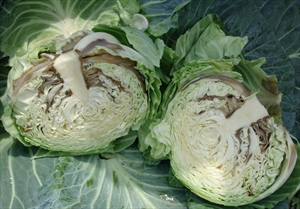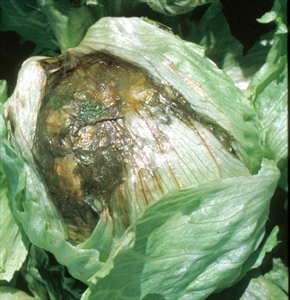- Worldwide distribution. A soil bacterium; common on cabbage, celery, carrot, Chinese cabbage, potato, and more.
- Infection via wounds at planting/harvest, and by insects.
- Large brown slimy areas on outer leaves, affecting the 'head' and stem, causing wilts and soft rots in field in wet, warm weather. Rots occur in transit and storage.
- Spread by rain splash, knives and insects.
- Cultural control: raised beds to improve drainage; straw/grass mulch; space plants; care when weeding; remove diseased plants; disinfect (bleach) knives used for trimming plants at harvest; avoid harvesting when wet; store at 4ºC; collect, burn/bury debris; 2-3-year crop rotation.
- Chemical control: none recommended.





